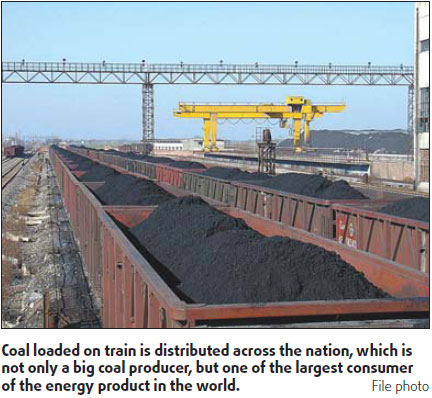


Developing a low carbon economy is a must as China continues to industrialize, not only for the nation's energy security strategy, but also as part of an urgent international responsibility to address global climate change.
A low carbon economy requires both new policies and technological support.
But China is a developing country in the process of modernizing and its central task now is to develop the economy and make life better for its people. This puts some practical restrictions on how it implements a low carbon economy.
China is the world's second-largest energy consumer and is now the world's largest coal consumer. China's proven coal reserves are much larger than its proven oil and gas reserves and it imported nearly 51 percent of its oil in 2008. China's reliance on coal as a main source of energy will last for a long time.
Alternative energy
But China could enhance its national energy security by developing innovative policies than prompt change in the country's energy consumption structure, shifting it from heavy dependence on coal and oil to energy-saving products and alternative energy.
Inadequate funds and outdated technology also impede China's attempts to go green. China's green technology level is generally low. Investment methods for clean energy and environmental protection industries should be improved through preferential financial, fiscal and industry policies.
China needs to embrace the Clean Development Mechanism (CDM) market to try to get more international financial and technological support and to boost carbon credit trading with developed countries.
The CDM is a key component of the Kyoto Protocol. The Protocol enables industrialized countries with greenhouse gas reduction commitments to invest in projects that reduce emissions in developing countries, as an alternative to more expensive emission reductions in their own countries. Developing countries, in return, receive extra funding and advanced emission reduction technologies through CDM projects.
$200b for clean energy
According to United Nations' statistics investment in CDM projects amounted to $20.5 billion worldwide in 2006. Some $200 billion will be spent on clean energy projects in developing countries by 2030.
CDM projects will bring in alternative energy technology but it will likely come with strings attached. China needs to cultivate its own technology and put some of its top scientists to work on the issue.
An increasing number of people should be sent abroad to study green technology and more foreigners in such fields should be enticed over here.
China's carbon emissions are not only an economic issue, but also a social concern. A variety of environmental protection funds and organizations should be used to help get members of the public onto the "green road."
Widespread public acceptance of a low carbon economy would get individuals to employ various kinds of compensatory manners to offset their greenhouse gas emissions.
Green culture is growing in China and more people are practicing green ideas in their daily lives.
"China is ready to work unremittingly with the rest of the international community to achieve harmonious, clean and sustainable development in the world," Chinese President Hu Jintao said at the 2008 G8 Summit's Major Economies Meeting on Energy Security and Climate Change. Taking steps to encourage the kind of innovation needed to push the country toward a low carbon economy will accelerate China's gait on the green road.
The authors are researchers with College of Political and Public Administration of the Hunan University.
(China Daily 03/09/2009 page3)













